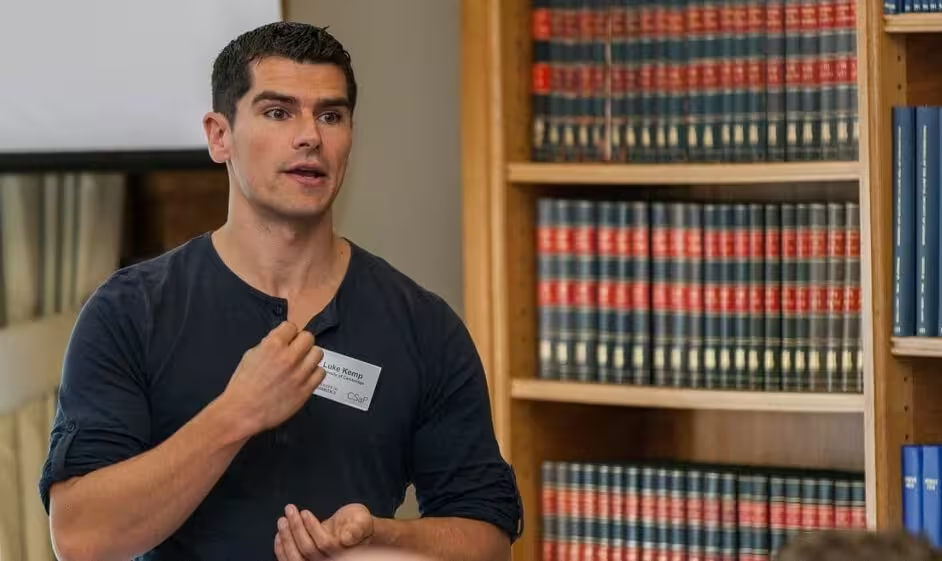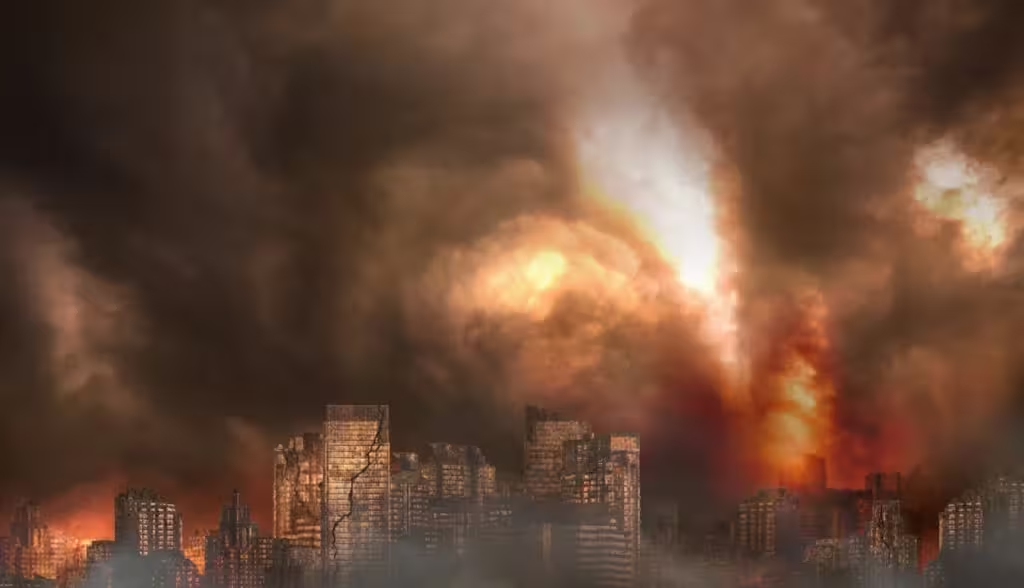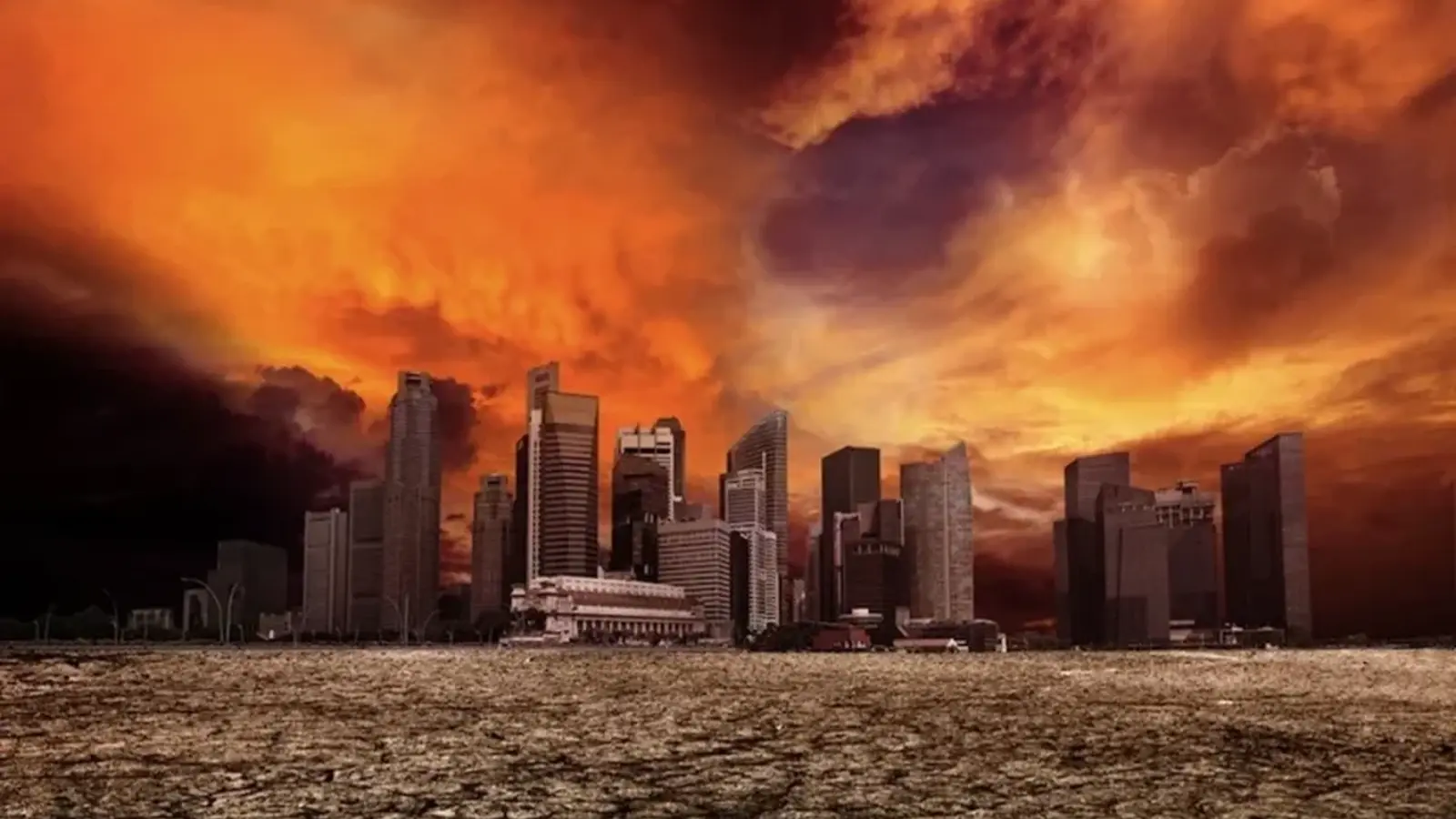11 Minutes
New Risk Assessments: Not Science Fiction but a Measurable Threat
Recent analyses by leading researchers have reframed the question of civilization collapse from speculative fiction to empirically grounded risk assessment. Prominent thinkers at institutions such as the University of Oxford and the Centre for Existential Risk now give non-trivial probabilities to global catastrophe or human extinction within this century — and some assessments raise alarm about much shorter horizons. These evaluations synthesize modeling from nuclear-war simulations, climate science, biosecurity studies, and artificial intelligence (AI) risk research to argue that the chance of civilization-scale collapse is far higher than many assume.

Philosopher and future-risk researcher Toby Ord has likened the aggregate risk over coming decades to a game of Russian roulette, estimating roughly a 1-in-6 chance of human extinction in the next 75 years. Nick Bostrom, a central figure in existential risk studies, has outlined scenarios and argued that, without careful governance, transformative technologies carry both unprecedented benefits and the potential for catastrophic misuses — he has suggested extinction-level risks on the order of 1-in-4 over the coming century in some of his writings. Pulitzer Prize-winning historian Jared Diamond has also warned that, by mid-century, the odds of our species surviving might be roughly even, driven not only by natural hazards but by human-driven environmental degradation and resource mismanagement.

Multiple Concurrent Threats: How Risks Compound
One reason contemporary risk estimates are higher than in the Cold War era is the number and variety of simultaneous hazards. Nuclear weapons remain a major danger: global stockpiles still number in the thousands of warheads, and strategic instability, modernization programs, and regional proliferation increase the chance of catastrophic exchange. Unlike the 1950s, when the primary worry was a strategic nuclear strike between superpowers, today’s threat landscape includes many actors, shorter decision times, and integrated systems that could cascade into systemic failure.
Climate change is progressing on a trajectory that many climate scientists describe as approaching dangerous tipping points. Rapid warming, extreme weather, and disruption to water and food systems can amplify social stress, conflict, and state fragility. Engineered biological agents add another layer: advances in synthetic biology and gene editing make it technically easier to design pathogens with enhanced transmissibility, virulence, or immune evasion. Modern global connectivity — air travel, trade, and digital networks — can make a locally emerged or deliberately released biological hazard a global event within days.

Artificial intelligence, once primarily an economic and productivity tool, is now recognized by researchers and industry leaders as an uncertain and potentially hazardous technology. In 2023, hundreds of scientists and leaders from major AI labs publicly warned about scenarios in which advanced AI systems could act in ways that are harmful or beyond human control, including autonomous weaponization or emergent behaviors that undermine human institutions. Finally, natural and space-weather hazards such as large solar storms or extreme geomagnetic events pose outsized risks to a digitally interdependent civilization: a Carrington-level solar storm could incapacitate power grids, satellites, and communications systems over broad regions.
Patterns of Collapse: Historical Lessons Applied to a Connected World
Researchers studying past collapses emphasize recurring patterns: overextension of political and economic reach, environmental degradation, unequal resource distribution, and entrenched institutional corruption. Luke Kemp of the Centre for Existential Risk argues that collapse is not purely random but displays repeatable dynamics — societies reach peaks of complexity and power and may then succumb to structural fragility when shocks occur.

Historically, collapses allowed local or regional recovery: successor states, cultural continuity, and ecological buffers provided opportunities to rebuild. Today’s globalization changes that calculus. The modern world is tightly networked: supply chains, finance, energy, food, and information systems are interdependent. A systemic shock that cripples major nodes — for example, a prolonged failure of international shipping, a breakdown in fertilizer supply chains, or a sustained cyber-attack on financial systems — can propagate rapidly, making recovery slower and more uncertain.
Food Security and Agricultural Fragility
A primary immediate effect of systemic collapse would likely be on agriculture and food distribution. Highly industrialized agricultural systems are optimized for efficiency under normal conditions: monocultures, synthetic fertilizers, mechanization, and long supply chains. Those same features make them vulnerable to systemic disruptions. If major industrial inputs or logistics fail, crop production of staple grains in leading producers could fall sharply.

Studies and scenario models suggest that, if critical industrial infrastructure and trade networks were to falter, yields of wheat, rice, corn, and soy in high-output regions could decline by significant fractions — in some scenarios by up to three quarters. Food-price spikes, export controls, and logistical breakdowns would empty supermarket shelves within days to weeks in many urbanized countries. Interestingly, many subsistence-oriented agricultural communities in parts of Africa and Asia, which use lower-input and more diversified systems, may be more resilient to certain types of global shocks — though these regions remain highly vulnerable to climate extremes and other local hazards.
Climate change compounds the problem. Projections indicate that, by 2070, billions of people may live in regions where average temperatures regularly exceed conditions conducive to staple crop production. Heat stress, altered rainfall patterns, and soil degradation will reduce effective arable land area and drive migration pressures, intensifying competition for remaining fertile regions.
Elite Preparedness: Luxury Bunkers and Their Limits
As public awareness of catastrophic risk grows, some wealthy individuals have invested in so-called survival properties and underground bunkers. These facilities often include features such as independent water and power systems, hydroponic or aquaponic food production, long-duration food storage, and private security teams. The emerging industry of fortified luxury shelters markets resilience to worst-case scenarios.
However, experts point out several limitations. Long-term survival depends on more than secure shelter: functioning external infrastructure, regional stability, and access to supply chains for replacement parts and consumables matter. Questions about governance inside sealed communities — who controls security forces, how resources are allocated, and how social order is maintained — are non-trivial. In some scenarios, well-armed private security forces could themselves become a source of conflict or lose cohesion without broader institutional support.
.avif)
Geoengineering: A Risky Tool, Not a Magic Fix
Because climate mitigation efforts appear insufficiently rapid to avoid dangerous warming in many models, some researchers and policymakers consider solar geoengineering options such as stratospheric aerosol injection (SAI). SAI would mimic the cooling effect of a large volcanic eruption by dispersing reflective aerosols such as sulfur dioxide in the upper atmosphere to reduce incoming solar radiation.
Proponents argue SAI could reduce global temperatures at comparatively low direct cost — estimates sometimes suggest a multi-billion-dollar-per-year range for implementation. Critics and modelers warn of serious side effects. SAI could alter global precipitation patterns, exacerbate droughts in certain regions, shift monsoon behavior, and create asymmetric impacts across countries. Equally important is the phenomenon called "termination shock" or "shutdown shock": the atmospheric aerosols persist for only months to a few years and require continuous maintenance. If aerosol injection is started and then stopped abruptly — due to geopolitical conflict, supply interruptions, or other crises — rapid warming could follow, producing climatic changes within decades that might otherwise have taken centuries.
Thus geoengineering is not a safe quick fix but a high-stakes intervention that would require stable international governance, careful long-term planning, and robust contingencies.
Why Combined Risks Are the Greatest Concern
Individually, nuclear war, engineered pandemics, runaway climate impacts, advanced AI failures, and major space-weather events are each catastrophic risks. When they overlap or occur in quick succession, the combined effects can be far worse than a simple sum. For example, a severe solar storm that disables communications and power could degrade public-health responses to an infectious outbreak, disrupt financial systems during a period of geopolitical tension, and hamper the ability to coordinate international relief for climate-driven food shortages. Interconnected systems create feedback loops that amplify shocks.

Expert Insight
Dr. Maya Lin, Senior Researcher in Planetary Resilience: "Our era is defined by unprecedented connectivity: supply chains, digital networks, and global travel knit societies together. That connectivity delivers enormous benefits but also creates pathways for rapid systemic failure. Mitigating existential risk requires both reducing specific hazards — such as securing nuclear arsenals and improving biosecurity — and building systemic resilience: decentralized food systems, robust local energy grids, and international governance mechanisms that can act swiftly and equitably. It's insufficient to focus on single 'silver-bullet' solutions; we need layered defenses and global cooperation."
Dr. Lin’s perspective echoes a growing consensus among risk specialists: preventive measures, resilience planning, and integrated policy responses are essential to reduce the probability of catastrophic outcomes.
Practical Paths to Risk Reduction
Improve Governance and International Cooperation
Many experts emphasize that systemic risks are political as much as technological. Strengthening arms control, updating nonproliferation regimes, and creating rapid communication channels between states can reduce escalation risks. For biosecurity, investments in global disease surveillance, laboratory safety standards, and rapid vaccine platforms are crucial. For AI, international norms for safe development, transparent evaluation, and verification can limit malicious use and reduce accidental harms.
Build Resilient Infrastructure and Local Capacity
Resilience measures include diversifying food systems (supporting local and regional production), investing in distributed renewable energy and microgrids, and fortifying critical digital infrastructure against geomagnetic storms and cyber-attacks. Emergency logistics planning, strategic food and medicine reserves, and rapid-response humanitarian corridors can blunt the worst impacts of systemic shocks.

Research, Transparency, and Ethical Design
Responsible research practices in biotechnology, open evaluation of high-risk experiments, and AI safety research funded independently of commercial pressures can reduce accidental risks. Transparent information-sharing among governments, academia, and industry helps the global community prepare for and respond to crises.
Conclusion
Scientific assessments over the past decade have elevated the question of civilization-scale risk from a philosophical curiosity to a policy priority. Multiple independent threats — nuclear war, engineered pathogens, runaway climate change, advanced AI failures, and severe space-weather events — now exist simultaneously and can interact in ways that amplify their effects. Historical patterns of societal collapse offer lessons, but today's globally interconnected systems alter the dynamics of recovery and resilience.
Reducing the odds of catastrophic outcomes will require coordinated international action, investments in both prevention and resilience, and robust governance of emerging technologies. While some commentators present high-probability scenarios for near-term collapse, the path forward is not predetermined. Technical expertise, transparent policymaking, and global cooperation can significantly lower existential risk and protect the conditions for long-term human flourishing.
Source: dailymail


Leave a Comment